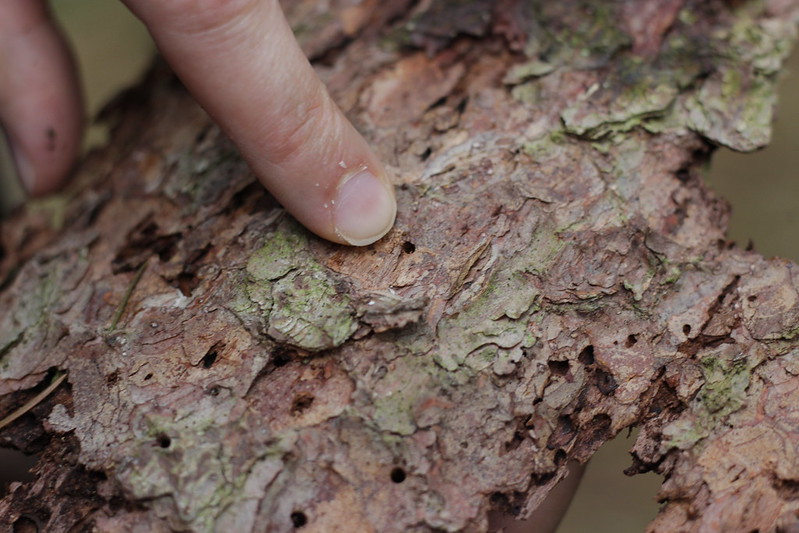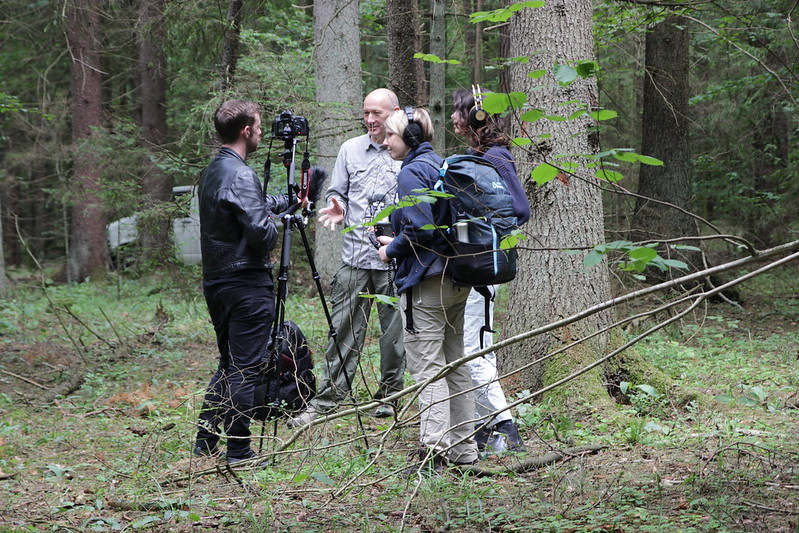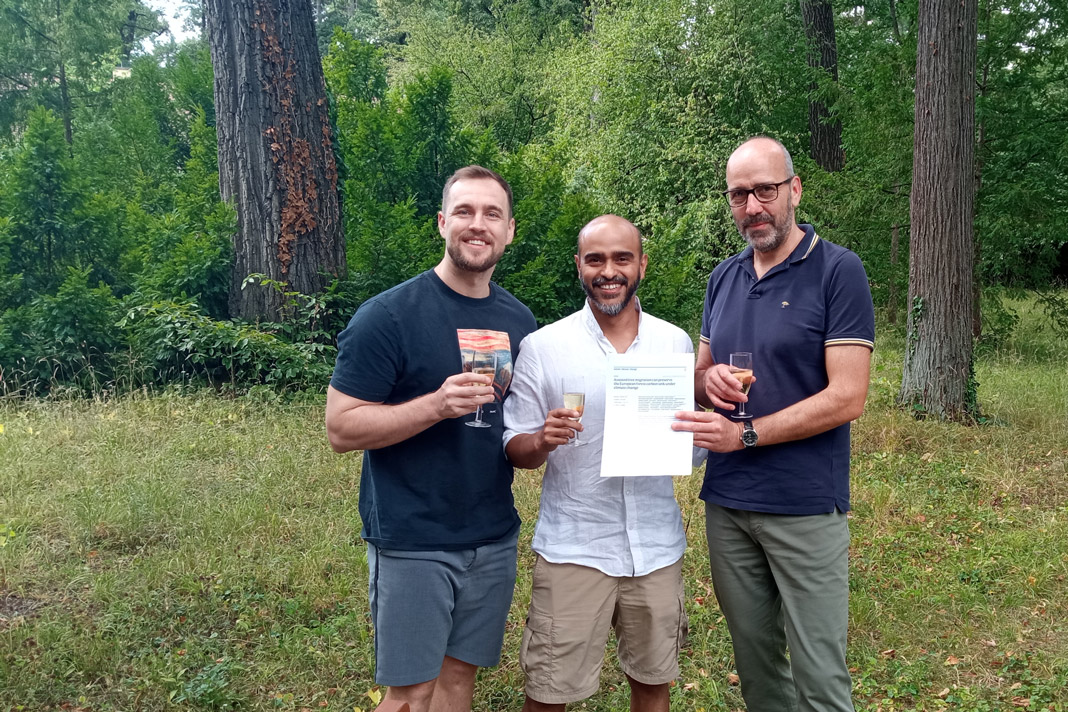Bioacoustics recording and systems thinking to help journalists report on complex science
On 11-12 July 2019, 9 journalists from six media teams visited the Białowieża Forest to attend the ‘Sound Co-Lab Reporting’ – a workshop introducing audio storytelling techniques to report on forest-related issues. The workshop was part of the Lookout Station which aims to bridge the gap between science and media and bring innovation to newsrooms. The event was organized in collaboration with EUFORGEN to bring forest genetics onto the map of interconnected issues needed to decipher today’s complex problems.
Białowieża Forest, a UNESCO-protected site on the border between Poland and Belarus, is known worldwide for its high conservation value and for a history of controversy over conservation and forest management.
The controversy around Białowieża Forest
The controversy was related to an outbreak of European spruce bark beetle (Ips typographus) which triggered increased salvage and sanitary logging. This intensified the conflict among different groups of stakeholders who did not agree on the approach to manage the outbreak.
Bark beetles are common pests of conifer trees (such as pines, cedars and junipers) across North America, Europe and Siberia. Rising temperatures are preventing winter larvae die-offs, and new beetles are hatching earlier in the year and reproducing more quickly while droughts have weakened the trees’ defenses. Land use and global spread of species have contributed to the beetle’s success.
Media covered the topic extensively, however, often failed to reveal or explain the complexity of the problem which goes beyond the pure forest management techniques and touches upon the history of land use, governance and socio-economic context.
Popular press has too often misrepresented science and scientific discovery or told only one side of the story. This has resulted in both skepticism and even fear of scientists to talk to news reporters about their research efforts.
Closing the gap between science and media

One of the goals of a sound reporting workshop was to create a process that would begin to change that. First by helping scientists speak with as little scientific jargon as possible and instead use terms and concepts that the journalist might use to communicate science to a general public. Secondly, by providing journalists an opportunity to closely observe the systematic and disciplined approach that good science uses in its efforts to understand the world. The journalists had an opportunity to experiment with new ways of telling that story.
The workshop explored recent advances in audio recording techniques and technologies, along with advances in the use of sound by scientists in their research of climate change and animal behavior.
Sound reporting, is a powerful way of communicating stories about natural history, conservation and science.
A sense of place through sound

“Sound captures a sense of place and of firsthand experience in a way that reading a description doesn’t necessarily,” said Laurel Symes, assistant director at the Bioacoustics Research Program (BRP) at the Cornell Lab of Ornithology. “It’s a way of taking somebody to a place and giving them as much of that experience as you can.”
Along with sound, the training included a systemic exploration of the many layers of the Białowieża Forest controversy through systems mapping exercises. The journalists will be able to apply this approach to analyse other complex issues they report on. "News is all about deadlines. This is one of the reasons why journalists have struggled to dig deeper into the issue more than on the surface level. Dissecting cause and effect/feedback loops and zooming into the situation in Bialowieza can really help journalists do better reporting about the issue", said Rina Tsubaki, the Lookout Station lead.
Putting forest genetics on the system map
That’s the entry point for forest genetics. It rarely receives media attention, not only because it’s a difficult topic, but because of the lack of connection to a bigger picture. ‘Forest genetic resources hardly ever hit the headlines. To change that, we need to learn to explain how they are part of stories which go far beyond the narrow scope of genetics’, says Ewa Hermanowicz who represented the EUFORGEN Secretariat at the workshop.
The media teams are expected to discuss their final projects and receive trainer’s feedback at the end of the year before they get published in 2020. Regular hang-out sessions with experts and mentorship throughout the project duration are part of the philosophy behind the Lookout Station, which nurtures the interactions between journalists and scientists beyond a single workshop.
You can find more photos from the workshop here.
Along with EFI, EUFORGEN and the Polish Forest Research Institute, sponsors included, European Forest Risk Facility, SURE, Multi Donor Trust Fund, Białowieża Geobotanical Station and Hindenburg Systems. Apart from Laurel Symes mentioned in the article; the trainers included Bill McQuay, an award winning audio producer at Eco Location Sound and a former sound engineer at the Lab of Ornithology; and Chris Joyce, a science correspondent at NPR. The workshop was facilitated by Rina Tsubaki of the Lookout Station/EFI. You can read more about the Sound-Co Lab here.







